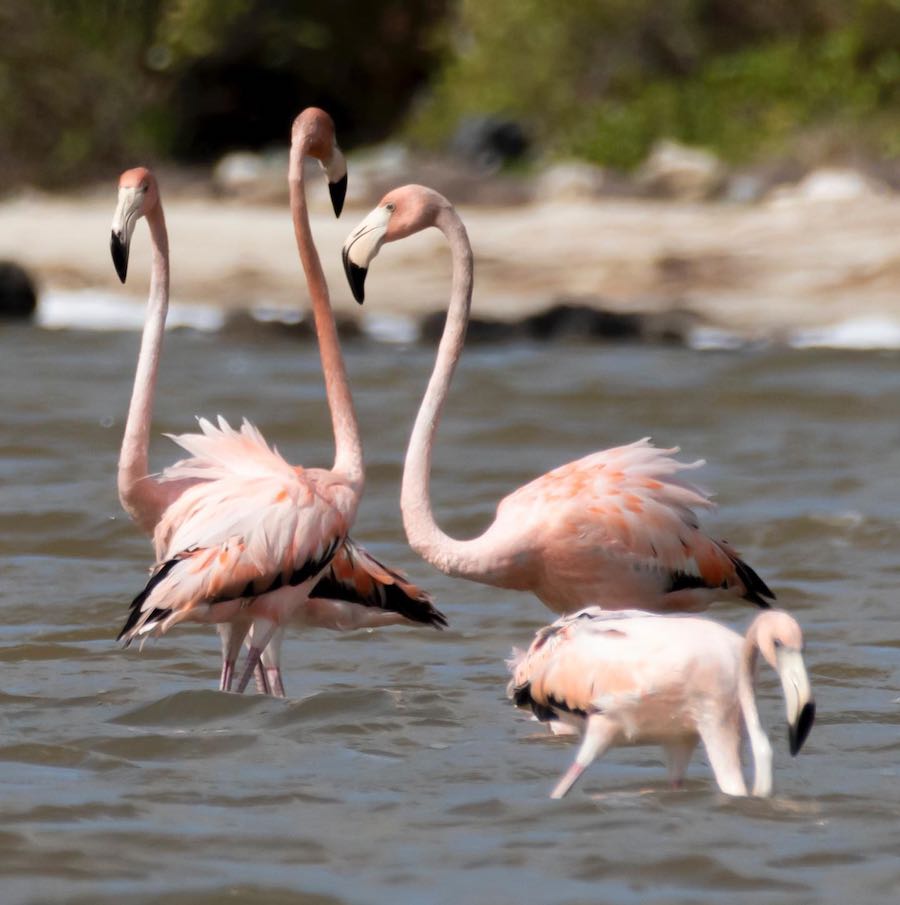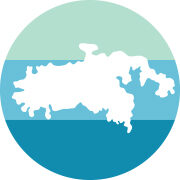
A flamboyance of flamingos has been visiting St. John in recent weeks, and while a flamingo sighting is relatively rare these days, I recently learned that hasn’t always been the case.
I was aimlessly scrolling through Facebook earlier this week when I came across a post on the Virgin Islands Audubon Society’s page. The post, written by Gail Karlsson – a St. John resident who is an environmental lawyer, author, photographer and bird watcher – announced that a flamboyance of flamingos has been spending time over at a salt pond near Salt Pond Bay. How exciting & interesting is that?!
A flamingo sighting on St. John is very rare. We had one spend the day at Trunk Bay back in 2016, which sent many of us into a frenzy. (It’s a small island and not a ton happens here – which is a good thing – so a flamingo sighting is a BIG deal in my world!) I needed to know more, so I reached out to Gail for details.
Gail informed me that flamingos were native to the Virgin Islands, but all were eaten or lost to development until the reintroduction on Anegada in 1992 and then another flock later on Necker Island. Anegada and Necker Island (a private island owned by Sir Richard Branson) are located over in the British Virgin Islands. According to Gail, there is currently a “smallish” flock on Beef Island (near the airport on Tortola), the Necker Island flock and about 300 on Anegada, according to the last bird count.
Gail told me that she spotted a single flamingo at the pond near Miss Lucy’s in September and that Laurel Brannick, a retired NPS park ranger, spotted seven near Grootpan last September. As of this morning, there are 13 hanging around the salt pond.



You may be wondering why all of the flamingos aren’t bright pink in color. “It takes the young ones several years to get their full color,” Gail wrote in a recent St. Thomas Source article, “and, in the meantime, they have black and white feathers, and pale pink legs and throats.”
She continued, “They also have to have a proper diet. Their pink coloration as adults comes from carotenoids in microscopic algae, which flamingos are able to metabolize to create pigments in their feathers. They can eat the algae directly, or get the carotenoids from eating brine shrimp or other tiny creatures that also feed on the algae growing in shallow, salty ponds.”
Click here to read Gail’s article in its entirety and to see additional pics.
No one is certain how long the flamingos will stay on St. John, but if you are lucky enough to see one during your next visit, please love them from afar. And if you are able to get some pics or video, feel free to share them on our Facebook page.
Are you following Explore STJ on social media? Like or follow us on Facebook at www.facebook.com/explorestj. Follow us on Instagram at www.instagram.com/explorestj

How wonderful …
As if St John itself weren’t reason enough to get on a plane, this just puts it over the top. Great story. Thank you!@
WOW, WOW, WOW!! I would luv to see this!
Here in my neighborhood in North Carolina I am known as “The Flamingo Lady.”
I have 5 flamingo statues, rain gauges, etc in my front landscaped area plus another 20 plastic ones that I move around the yard EVERY DAY!!
I even have a family with 2 babies!
My neighbors come by to see where they have moved to each day. I went to Bonaire a d while there saw hundreds & hundreds of flamingos and fell in luv with them. I know they must be beautiful while they are visiting St. John.
We saw probably 50 to 60 at Drunk Bay near Salt Pond last Wednesday
My wife and I were fortunate enough to see a juvenile flamingo in the shallows of Well Bay across from the airport on Beef Island a week ago Saturday. We were at the little beach at Surfsong and watched this beautiful creature for quite a while. A real treat. Thanks for helping us identify it.
Juvenile Flamingo siting
Pingback:The Flamingos are Still Here! - Explore STJ